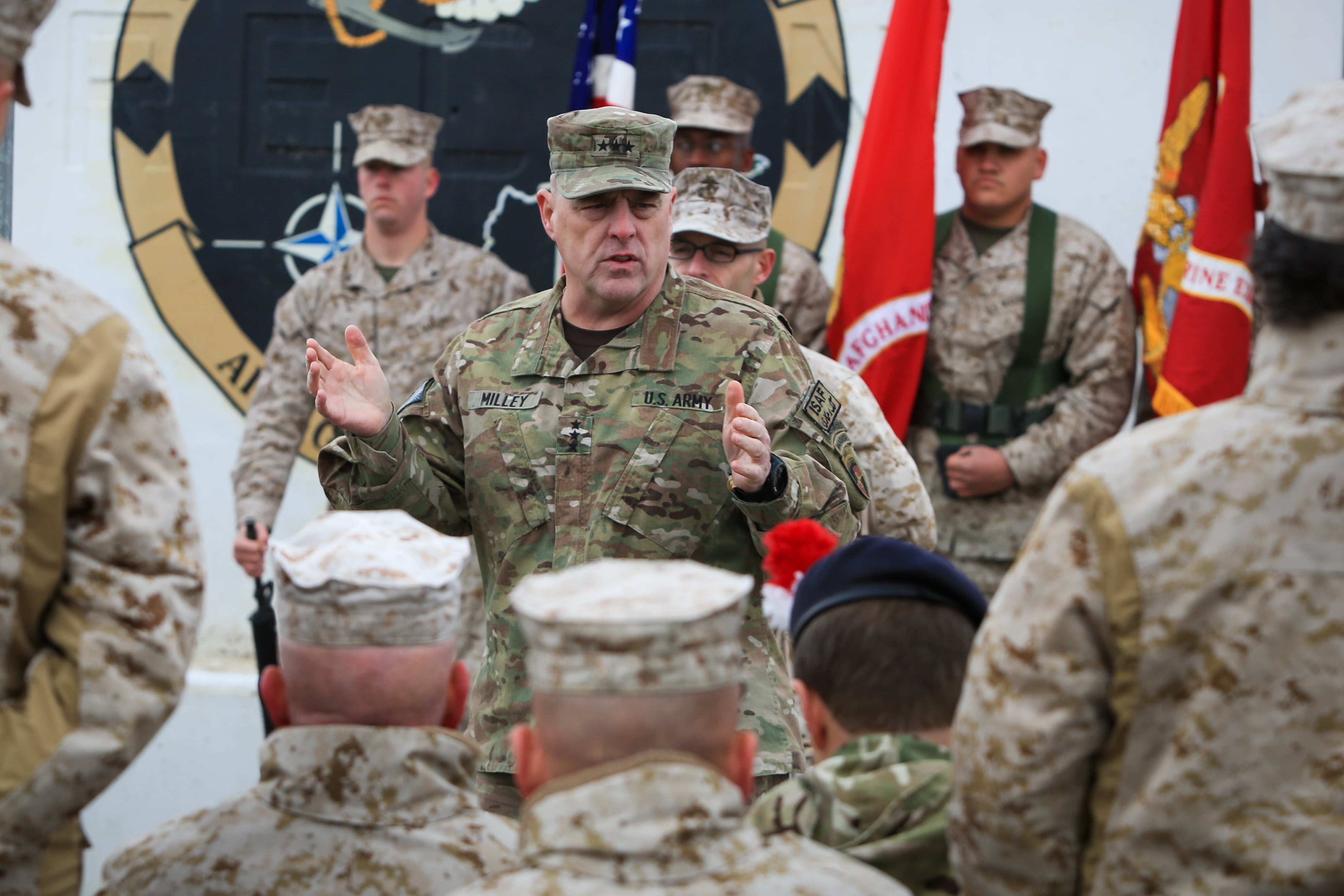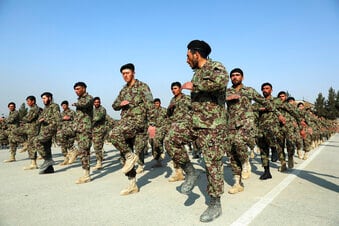WASHINGTON (AP) — America’s longest war is approaching a crossroads.
President Joe Biden’s choices in Afghanistan boil down to this: withdraw all troops by May, as promised by his predecessor, and risk a resurgence of extremist dangers, or stay and possibly prolong the war in hopes of compelling the Taliban to make peace with a weak and fractured government.
The second option may be the most likely, but officials say no decision has been made.
Afghanistan presents one of the new administration’s tougher and more urgent decisions. The U.S. public is weary of a war nearly 20 years old, but pulling out now could be seen as giving the Taliban too much leverage and casting a shadow over the sacrifices made by U.S. and coalition troops and Afghan civilians.
Biden has not commented in detail on Afghanistan since taking office, but he has a long history with the war. In 2009 as vice president, he lost an internal administration debate at a crucial juncture in the war; he argued for reducing the U.S. military commitment to focus mainly on countering extremist groups, but President Barack Obama decided instead to vastly increase troop numbers to 100,000.
The Obama strategy failed to force the Taliban to seek peace, and by the time Donald Trump entered the White House in January 2017 Obama had dropped the troop total to about 8,500. Trump increased it by several thousand later that year, and after his administration reached a conditional peace deal with the Taliban in February 2020, he began a withdrawal, including a reduction last month to the current total of 2,500.
Biden said during the 2020 campaign that he might keep a counterterrorism force in Afghanistan but also would “end the war responsibly” to ensure U.S. forces never have to return.
“I would bring American combat troops in Afghanistan home during my first term,” he wrote last summer in response to written questions from the Council on Foreign Relations, although the U.S. mission there already shifted some years ago from combat to advising Afghan security forces. “Any residual U.S. military presence in Afghanistan would be focused only on counterterrorism operations.”
The administration says it is studying the February 2020 so-called Doha deal in which the Taliban agreed to stop attacking U.S. and coalition forces and to start peace talks with the Kabul government, among other things, in exchange for a complete withdrawal of foreign troops by May 1, 2021.
Senior U.S. officials have asserted for months that the Taliban has fallen short of its Doha commitments, and although the administration’s review is ongoing, arguments for extending a troop presence beyond May 1 are considerable.
U.S. allies in NATO have not disputed the U.S. complaint that the Taliban has not fulfilled it Doha commitments, nor have they called for an early troop withdrawal. Some appear to be preparing for a U.S. decision to stay beyond May 1.
The deadline, barely two months away, is itself a factor, since it will soon be too late to get all 10,000 U.S. and NATO troops out in an orderly way by May 1. Defense Secretary Lloyd Austin said last week that he has assured U.S. allies and partners in Afghanistan there will be no “hasty” pullout, and that Washington’s focus is on diplomacy.
“Clearly, the violence is too high right now, and more progress needs to be made in the Afghan-led negotiations, and so I urge all parties to choose the path towards peace,” he told reporters.
RELATED

A further hint of the administration’s thinking may be its repeated reference to reviewing “compliance” with the Doha agreement, suggesting the possibility that the administration ultimately will argue that Taliban noncompliance makes the May 1 deadline void, or at least moveable.
That was the central argument offered in a Feb. 3 report by the congressionally authorized Afghanistan Study Group, whose members included Joseph Dunford, the retired Marine general and former chairman of the Joint Chiefs of Staff, who once led U.S. forces in Afghanistan. It called for an immediate diplomatic push to extend the May 1 withdrawal deadline.
“The Study Group believes that further U.S. troop withdrawals should be conditioned on the Taliban’s demonstrated willingness and capacity to contain terrorist groups, on a reduction in the Taliban’s violence against the Afghan people, and on real progress toward a compromise political settlement,” the report said.
A complete U.S. troop withdrawal not tied to progress in peace negotiations would likely lead to an end to most U.S. financial aid to Afghanistan and a closing of the American embassy, it argued.
“This would be a highly risky, and even dangerous, approach that could foment more conflict than it resolves and create the sort of threats that imperil U.S. security. It would most likely result in a new chapter of civil war, not unlike the one that erupted in the 1990s and led to 9/11,” it said, referring to the Sept. 11, 2001 attacks on the United States that prompted a U.S. invasion of Afghanistan a month later.
Stephen Biddle, a Columbia University professor who previously advised U.S. military officials on the war, says it probably was a mistake for the Trump administration to promise a full withdrawal by a specific date.
“If it’s important enough to be there at all, to be spending money at all, to be risking lives at all, then the point of being there is to get a negotiated agreement, and for that you need leverage,” Biddle said. What’s left of American leverage at this point, he said, rests with the U.S. military presence and the prospect of financial aid once a peace deal is done.
“We need to husband our leverage, and that means not unilaterally withdrawing without a deal,” he added. “If you’re serious about a deal and are willing to do what it takes to get one, then that implies patience beyond April, probably.”
